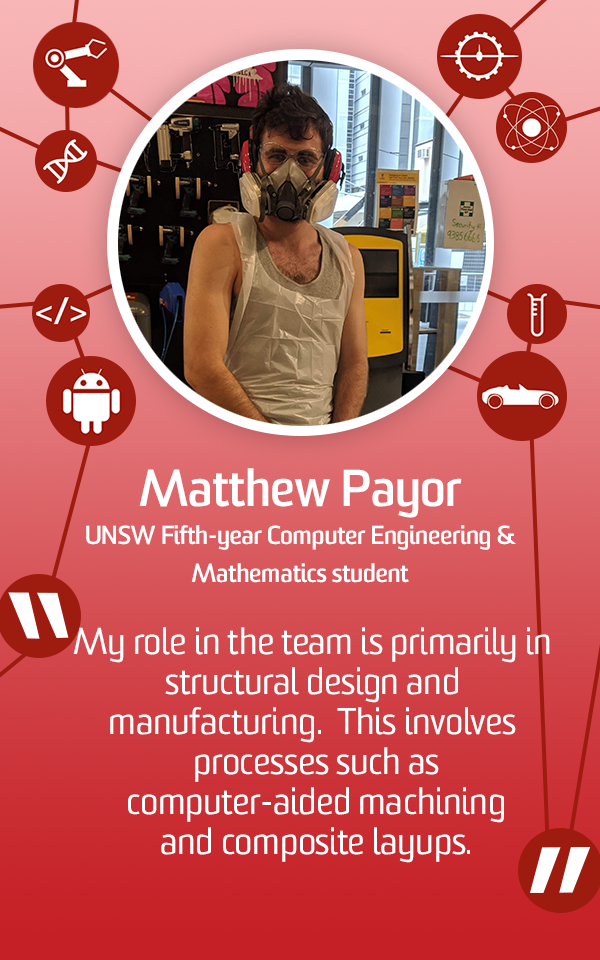
The UNSW Flight Labs (FLU) team would like to introduce you to WREN, a flying-wing quadplane with the ability to autonomously fly, search an area and detect objects, and air-drop a ground vehicle to deliver a water bottle to a location - all without any human control.
Over the past few months the FLU team have worked tirelessly in the lead up to the Association for Unmanned Vehicle Systems International Student Unmanned Aerial Systems Competition (AUVSI SUAS) competition in the USA, designing, building and testing a flying-wing quadplane of our own design to address this year’s challenge with a vehicle that could both take off vertically, and also fly efficiently at high speeds. This dedication paid off with the development of a spectacular vehicle that stole the spotlight in Maryland. 
My role in the team is primarily in structural design and manufacturing. This involves processes such as computer-aided machining and composite layups. However, with a small flying vehicle, each design decision in one area has flow on impacts to others, and thus our team members contribute across almost all aspects, from structural to electrical to computing work.
The key success in our new design is a unique production method we've developed from scratch this year that incorporates aerodynamic, structural and electrical components into single-piece positive composite units. Coupled with an amazing home grown joint design, WREN can be transported by suitcase in parts, assemble into a working aircraft in seconds, and support its entire weight cantilevered from one wingtip. We do all of our manufacturing at UNSW thanks to the amazing facilities provided by the UNSW Makerspace network, with most of our CNC machining and 3D printing facilitated by FBE's Design Futures Lab; and our layups, electrical and assembly work taking place at Engineering's Kirby and Tyree Makerspaces If you're interested in the details of our processes, we document these on our website.
Unfortunately there were some issues with the autopilot during our competition flight and WREN took a nosedive back to ground, however with the AUVSI SUAS competition behind us and some potent design recipes developed and validated, our outlook for this year includes repairing the current airframe to continue flight testing, and making some small electrical and aerodynamic tweaks to iterate the design for the Medical Express competition next year. Our more junior team members will also be designing a new aircraft!
Post competition, we had an incredible opportunity to visit Boeing's 777X Composite Wing Centre in Everett, Washington, where they are developing the production of carbon fibre wings for the 777X airliner. Being able to see how they are pioneering processes familiar to us at a gigantic scale with high accuracy and quality control was phenomenal. We're very thankful for the Boeing engineers that showed us around and allowed us to pick their brains, their expertise has impressed us with many ideas to try out back here.
